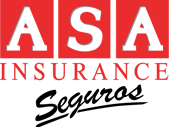Having your home inspected on a regular basis can not only save your house and property from serious damage, but your health as well. Much of what is necessary for a thorough inspection can be completed by homeowners themselves, though areas such as electrical systems, plumbing, and roof defects should be left to qualified professionals unless you are qualified to do so yourself. Some of the things that homeowners can inspect themselves are:
- Check for failed window seals
- Check for water damage or leakage
- Check for maintenance problems; chipping paint, rotting decks etc.
- Failed weather stripping and caulking around fittings
- Overhanging branches or loose debris that may cause damage during a storm
Especially important is inspecting under the house beneath kitchens, laundry rooms, bathrooms, and exterior doorways. Stains on the ceiling or walls beneath these areas are normally signs of water leakage that can cause serious damage. Homeowners should also look for cracks around windows and doors, as well as cracks in the walls, inside and out, which may indicate foundation problems.
Homeowners should also look around their attics for signs of roofing defects. The plywood sheeting under the shingles can be inspected for signs of leakage, as can the roof beams that support the roof.
Keeping a regular eye out for such things can save your house from serious damage that could lower the value of your home, and cause your insurance rates to soar. Not only are you protecting your pocket book and property by performing regular home inspections, but your and your family’s health as well.
Monitor Your Home for Mold
Mold is commonly caused by water leakage and fuelled by high humidity or dampness. Checking bathrooms and basements on a regular basis can help you identify mold before it becomes a health problem. Initial signs that mold is flourishing somewhere in a home are allergic reactions or respiratory problems. Those with hay fever and asthma are especially susceptible, but long term exposure can affect anyone’s health.
If you find mold in your home it can be easily cleaned without hiring a professional contractor. It must be done by someone who is not susceptible or allergic to it however, and protective clothing such as rubber gloves, boots and protective goggles. Clothes should be washed on their own at a high temperature when the cleaning is finished. The Salt Lake County Health Department recommends that a detergent be initially used, followed by a solution of bleach and water (1’4 cup bleach per gallon of water), then the area allowed to dry. Apply further cleanings as necessary.
To prevent mold from reoccurring, wash linens and upholstery regularly, and keep them dry. Make sure you store the cleaned items in an area that is well ventilated, and try to keep moisture in the air to a minimum by using dehumidifiers and airing your house out regularly. As previously recommended, monitor your bathrooms and basement regularly for signs of water leakage or mold itself to protect the health of your home and family.
